|
|
Vitamins
There are two categories of vitamins: fat soluble and water soluble. Fat soluble vitamins are, A, D, E & K They dissolve in fat and can be stored in the body. They are digested only in bile because they are insoluble in water. Water soluble vitamins are B, & C they
need to be dissolved in water before the body can absorb them. Due to this the body cannot store them. Any additional amount, the body cannot use, and therefore it passes through your body. So you need to eat a fresh supply each day to ensure your are obtaining the necessary quantities.
Vitamin A
Vitamin A is essential for the growth of children, healthy skin and for normal vision. It is also important for a healthy immune system by strengthening resistance to infection. Vitamin A is found in liver, cod liver oil and dairy products. The body can also convert the antioxidant beta-carotene, found in yellow and orange fruits and vegetables and dark green vegetables into vitamin A. Vitamin A is a fat-soluble vitamin and is stored in the liver. Excess intake can be harmful so it is advised that pregnant women do not take vitamin A supplements or have liver or liver products that may contain large amounts of vitamin A.
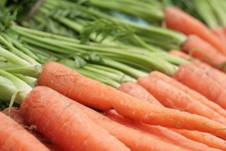 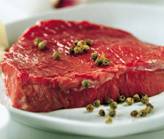
Deficiency symptoms
Vitamin A deficiency can have severe consequences. It is normally accompanied by protein and zinc deficiency. Up to a year's supply of vitamin A can be stored in the body. That means that deficiency symptoms do not appear immediately after stopping the intake of this vitamin. One of the first symptoms is night blindness. If the deficiency continues, it can also lead to degeneration of the cornea and cause blindness. It can also prevent bone growth, or cause changes in bone shape and development of cracks and decay in teeth and atrophy of dentin-forming cells. Anaemia is another consequence. In addition, it affects the nervous and muscular system, and can lead to paralysis
Vitamin B group:
Vitamin B1 (thiamin) is important for the release of energy from carbohydrate foods and for a healthy nervous system and heart. It is present in lots of foods but in small amounts. Important sources include whole grains, flour and bread, meat (especially pork), and fortified breakfast cereals.

Deficiency symptoms
Deficiency symptoms are abnormal heart rhythms, heart failure, weakness, difficulties in walking, mental confusion, and paralysis
Vitamin B2 (riboflavin) is necessary for the release of energy from food and normal growth. It is mainly found in milk and dairy products. Other useful sources include eggs, fortified breakfast cereals, liver and some green vegetables.
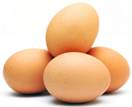
Deficiency symptoms
No disease is associated with riboflavin deficiency. Lack of riboflavin can cause symptoms such as skin rash, cracks and redness near the corners of the eyes and lips, as well as a hypersensitivity to light (photophobia).
Vitamin B3 (niacin) is required for the release of energy from food, the normal structure of the skin and nervous system. The major source in the UK diet is from meat. It is also provided by liver, yeast extract, flour and bread.

Deficiency symptoms
Niacin deficiency disease, leads to symptoms such as dermatitis, diarrhoea, and dementia.
Vitamin B5 (pantothenic acid) is necessary for release of energy from food. It is also important for the production of red blood cells. It is found in a wide variety of meat and vegetable sources including beef, chicken, eggs, potatoes, broccoli, tomatoes and whole grains.
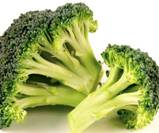 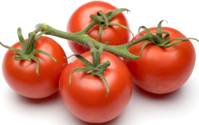
Vitamin B6 (pyridoxine) required for the metabolism of protein, a healthy nervous system and normal blood function. It is found in a variety of foods including beef, fish, poultry, eggs, whole grains and some vegetables. Vitamin B12 is necessary for normal cell division, the formation of red blood cells and nerves. Dietary sources are from animal sources eg milk, meat and eggs (and fortified foods).
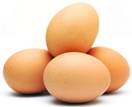 
Deficiency symptoms
People whose vitamin B6 intake is too low may show symptoms such as weakness, irritability and insomnia. Further symptoms are growth failure, impaired motor function and convulsions.
Vitamin B12 is important in the production of red blood cells and for helping to release energy from food. It is found in meat, fish, dairy products, yeast extract and fortified cereals.

Deficiency symptoms
Vitamin B12 deficiency can lead to anaemia, which is actually caused by folate deficiency. Without vitamin B12, folate cannot assist in the building of red blood cells. The symptoms of either deficiency are large, immature red blood cells, indicating a slow DNA synthesis. A deficiency can also affect the nervous system, leading to degeneration of peripheral nerves, progressing to paralysis. It can also cause skin hypersensitivity
Folic acid (folate)
Folic acid is required for the formation of red blood cells and the structure of the nervous system. It is essential in early pregnancy for the normal development of the growing embryo to prevent spinal defects such as spina bifida. Folic acid is found in green leafy vegetables, orange juice, yeast extract and breakfast cereals that have been fortified. Women of child-bearing age should ensure they get plenty of folic acid in their diet.

Deficiency symptoms
Folate deficiency can lead to anaemia. The symptoms are large, immature red blood cells, indicating a slow DNA synthesis. This can be caused not only by a folate deficiency but also by a lack of vitamin B12.
Vitamin C
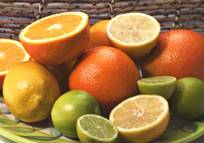 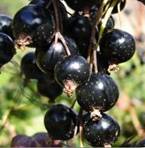 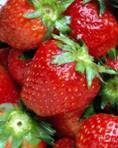
Vitamin C is an antioxidant and is important for a healthy immune system. It is required for the normal structure of connective tissue (in skin, cartilage and bone) and for the formation of the protein collagen required for the healing process. Vitamin C also plays an important role in the healing of wounds and fractures and assists in the absorption of iron in the body. It is found mainly in fruits and good sources include blackcurrant's, strawberries, oranges and other citrus fruits.
Deficiency symptoms
The first signs of vitamin C deficiency are bleeding around the teeth and breaking capillaries under the skin, producing pinpoint haemorrhages. A major lack of vitamin C acts on the nervous and muscular system. This can lead to muscle degeneration as well as to pain, hysteria and depression. Further symptoms are anaemia, frequent infections, a rough skin and the failure of wounds to heal.
Vitamin D
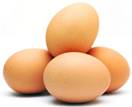 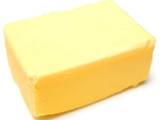 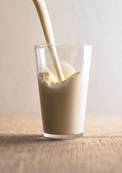
Vitamin D is important for the absorption of calcium and phosphorus in the body helping form strong bones and teeth. Vitamin D is known as the sunshine vitamin as the body can produce it when exposed to sunlight. The action of sunlight on the skin is the most important source of vitamin D as very few foods contain the vitamin. Vitamin D, however, can also be found in oily fish, eggs, butter and milk. Margarine is also fortified with vitamin D.
Deficiency symptoms
Vitamin D deficiency causes the same symptoms as a calcium deficiency. Bones are not able to calcify in the normal way. They can become so weak that they bend under the body's weight. Lack of vitamin D can also cause deformities and pain of limbs, spine, thorax and pelvis. It can also damage the nervous or muscular system, causing muscle spasms.
Vitamin E
 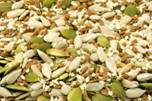
Vitamin E is an antioxidant and can help protect the cell membranes and the body from free radicals. Vitamin E is found in vegetable oils, nuts, seeds and avocado.
Deficiency symptoms
When the level of vitamin E in the blood becomes too low, red blood cells may break open. This process is called erythrodyte hemolysis and can be corrected by treatment with vitamin E Vitamin E deficiency can affect the nervous and muscular system and cause degeneration, weakness, difficulties in walking and pain in calf muscles
Vitamin K
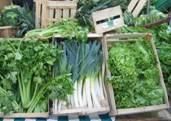 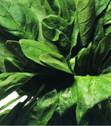
Vitamin K is found in both plant and animal sources and is essential for the normal clotting of blood and the development of bone structure. Deficiency is rare but newborn babies are usually given an injection of vitamin K. Sources include spinach and other leafy green vegetables.
Deficiency symptoms
If vitamin K is missing, blood cannot clot. This can lead to haemorrhagic disease. However, vitamin K deficiency is rare.; only babies are susceptible to it. This is because the digestive tracts of new-born babies are sterile and do not contain the bacteria that synthesise vitamin K Also, breast milk contains only small amounts of vitamin K. This is why babies are given a dose of vitamin K at birth. |
|
Minerals
Whereas vitamins are organic substances (made by plants or animals), minerals are inorganic elements that come from the soil and water and are absorbed by plants or eaten by animals. Your body needs larger amounts of some minerals, such as calcium, magnesium and potassium to grow and stay healthy. Other minerals like chromium, copper, phosphorus iodine, iron, selenium, and zinc are called trace minerals because you only need very small amounts of them each day.
Iron
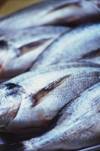 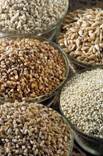
What does iron do?
Iron is necessary for healthy blood. A lack of iron can lead to iron deficiency anaemia which is associated with frequent infections, tiredness and low moods.
Good sources of iron
Iron from plant foods is not absorbed as well as it is from animal sources. Vitamin C helps with the absorption of iron from foods so serve plenty of fruit and vegetables at mealtimes.
How much do I need?
By eating a healthy and varied diet most people should be able to obtain all the iron they need. Women need 14.8mg per day and men need 8.7mg per day. Women who have heavy periods and teenage girls starting their periods are especially vulnerable to iron deficiency.
These nutrients stimulate absorption:
Vitamin A
Copper
Meat proteins
Vitamin C
These nutrients inhibit absorption:
Calcium
tannins-found in tea
Polypenols and Phytates found in Legumes and whole-grains.
Deficiencies:
Storage iron
Anaemia
Magnesium
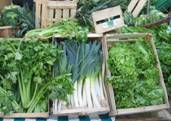 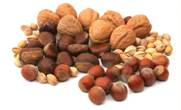
What does magnesium do?
Magnesium has several functions, it helps the parathyroid gland, which produces vital hormones for bone health, to work normally and it helps the body turn food into energy.
Good sources of magnesium
-
Green leafy vegetables
-
Nuts
-
Bread
-
Meat
-
Fish
-
Dairy food
How much do I need?
Magnesium is found in a variety of foods, so by eating a healthy, varied diet you should be able to obtain the recommended amount: 300mg a day for men and 270mg a day for women.
These nutrients stimulate the rate of absorption:
Calcium
iron
magnesium
Potassium
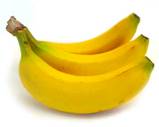 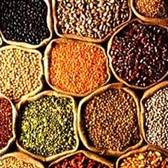
What does potassium do?
Potassium is an important mineral and has a variety of functions. It controls the balance of fluids within the body and is thought to help lower blood pressure.
Good sources of potassium
How much do I need?
As with most minerals you should be able to obtain sufficient potassium in your diet (3500mg a day for adults) by eating a wide variety of healthy foods.
These nutrients inhibit absorption:
anti-imflammatery agents
Laxatives
Deficiency: An abnormally low plasma potassium concentration is referred to as hypokalemia. Hypokalemia is most commonly a result of excessive loss of potassium, e.g., from prolonged vomiting, the use of some diuretics, some forms of kidney disease, or disturbances of metabolism. The symptoms of hypokalemia are related to alterations in membrane potential and cellular metabolism.
Low dietary intakes of potassium do not generally result in hypokalemia. However, recent research indicates that insufficient dietary potassium may increase the risk of a number of chronic diseases.
Phosphorous
 
What does phosphorous do?
Phosphorous has a variety of roles in the body, it helps release energy from food and it works in conjunction with calcium to build strong bones and teeth.
Good sources of phosphorous
-
Fish
-
Dairy foods
-
Chicken and turkey
-
Red meat
-
Nut
How much do I need?
Adults need 550mg of phosphorous a day, by eating a well balanced, healthy diet you should be able to get this amount from dietary sources.
Inadequate phosphorus intake results in abnormally low serum phosphate levels (hypophosphatemia). Because phosphorus is so widespread in food, dietary phosphorus deficiency is usually seen only in cases of near total starvation
These nutrients stimulate absorption:
Calcium
Vitamin D
These nutrients inhibit absorption:
Fructose
Calcium
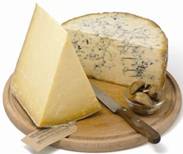 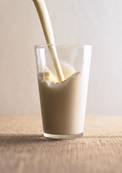
This important mineral is the main component of bones and teeth. It is essential for growth in children, and helps to ensure efficient muscle contraction and blood clotting. It is also thought to help lower blood pressure.
Our bodies cannot make calcium, so we must get it from the foods we eat and drink. There are only a few foods that contain substantial amounts of calcium, so it is important to ensure we have an adequate daily intake.
Theses nutrients inhibit absorption:
oxalic acid
Phytic acid
sodium
protein
phosphorous
caffeine
Deficiency:
chronic kidney failure
Vit D deficiency
Low blood magnesium
Osteoporosis
Plant foods are the major dietary sources of selenium in most countries throughout the world. The content of selenium in food depends on the selenium content of the soil where plants are grown or animals are raised.
 
These nutrients stimulate absorption:
Iodine
Antioxidant nutrients
Deficiency: Insufficient selenium intake results in decreased activity of the glutathione peroxidases. Even when severe, isolated selenium deficiency does not usually result in obvious clinical illness. However, selenium deficient individuals appear to be more susceptible to additional physiological stresses.
Human selenium deficiency is most notable in China where soil concentration of selenium is low. There is evidence that selenium deficiency may contribute to development of a form of heart disease, hypothyroidism, and a weakened immune system. There is also evidence that selenium deficiency does not usually cause illness by itself. Rather, it can make the body more susceptible to illnesses caused by other nutritional, biochemical or infectious stresses |
|
The Herb Garden
Herbs are a way to decorate and garnish foods. They are also packed with flavour to enhance foods providing a nutritious taste punch.
Rosemary- Best used fresh, sprigs are often used to flavour meats, especially lamb, during roasting. It's also good with poultry, turkey, sausages, and fish - especially red mullet and snapper. Try tossing rosemary sprigs in the roasting tin with root vegetables while they cook. Potatoes and rosemary is a classic pairing. Popular in Italian cooking, it's best to chop rosemary leaves before adding to sauces and pastas.
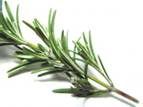
Thyme: An essential component of a bouquet garni, thyme is used frequently in French cuisine and consequently in the French-derived Creole cooking. Used for stuffing's and sausages.
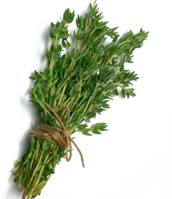
Mint: A classic pairing with roast lamb. Infusions like this are known as tisanes in France, and aren't usually sweetened. For a sweet tea - try Moroccan mint tea, made with green tea and mint. Mint is used in many cuisines, especially Asian and the Mediterranean. Use it in salsa verde, fresh Italian-style salads or Thai dishes.
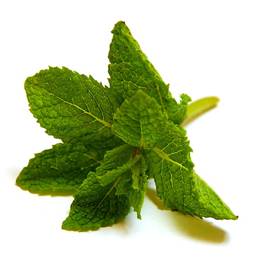
Parsley A key ingredient in flavouring salads, butters, dressings and salads and salsas. Parsley works particularly well with garlic, lemon and olive oil - it's one of the most versatile herbs in the kitchen.
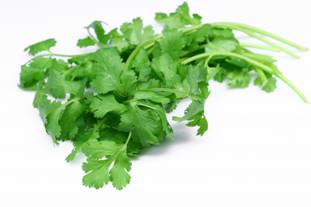
Oregano: The quintessential herb for pizza, oregano lifts tomato sauces and lamb in particular but suits a wide range of Italian meat, poultry and fish dishes. It's also works well with cheese and eggs. Crush dried oregano lightly in your hands before adding to dishes to activate its essential oils, and for the best taste add it near the end of cooking.

Ginger: Ginger is essential to most Oriental and Asian cuisines. The addition of a little ginger is the clever Chinese method of removing strong fishy smells. Ginger works particularly well with beef, pork, chicken, all seafood, beetroot, chocolate, cream and rhubarb. Dried ginger is mainly used for sweet baking and desserts.
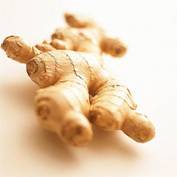
Dill: Finely chopped fresh dill brings bright aroma and colour to rice pilafs and creamy sauces and dressings. Salmon, white fish, potatoes, broad beans, spinach and cucumber are other classic matches.

Coriander: Coriander is the base of Thai curries as well as chermoula, the Moroccan spice paste that goes exceptionally well with fish. Add it to salsas of all kinds, or combine with olive oil to give simple steamed vegetables such as carrots or green beans a lift.
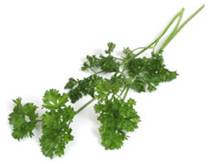
Cinnamon: It is also employed in Chinese five-spice powder, and was one of the first spices used to flavour chocolate - in some countries it's common to stir coffee and tea with a cinnamon stick. Try it sprinkled on toast or custard, or add to any fruit compote.

Chives: They work particularly well with eggs, cheese and other dairy products, and in mashed potato and salad dressings.
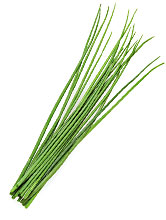
Chilies: The heat level of a chili is determined by the amount of capsaicin that is contained mainly in its ribs and seeds. In India they are left in, but if you want flavour without too much heat, you need to remove them. Cut the chili in half lengthways then scrape out the rib and seeds with a sharp knife. Alternatively, use a whole chili - drop it into a little hot oil in the pan at the beginning of cooking, then remove it at the end to achieve the flavour

Bay leaves: Bay leaves are one of the foundations of good cooking, used alone or as part of a bouquet garni to flavour stocks and bouillon's, sauces, soups, stews and pickling brines. Try adding a leaf to the water next time you boil rice.
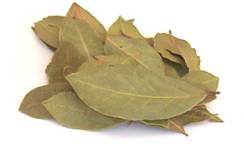
Basil: Classic basil matches are tomatoes, olive oil, fresh cheese and lemon. It is the key ingredient of pesto Genovese sauce, which can be served with baked potatoes, white fish, chicken and lamb as well as pasta.

Lemon Grass: Lemon grass is essential for Thai curry pastes and a lovely addition to stir-fries.
The stalks make fragrant skewers for minced prawns or chicken cooked on the barbecue. Mince the tender parts to strew over fresh tomatoes.
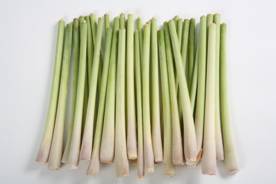
Tarragon: In French culinary tradition, tarragon is the predominant flavour in bérnaise sauce. Tarragon also blends well with other spices and herbs, and is teams up with chervil, parsley and chives in spice blend fines herbs. Tarragon also complements fish (especially shellfish), chicken, egg, soup and grilled meats

Chervil: Use chervil to add a punch of herby flavour to mild-flavoured chicken and seafood or as a garnish atop steamed baby vegetables.
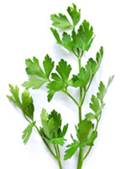
|

|
|

![]()














































